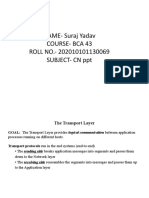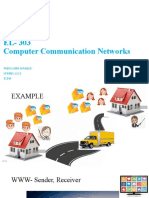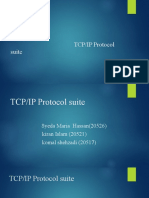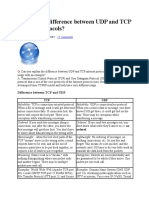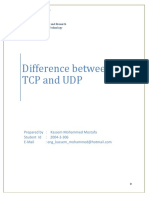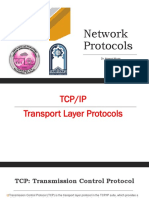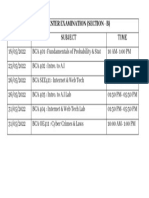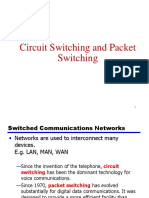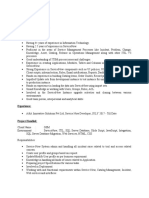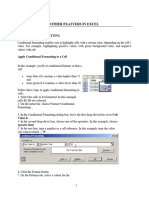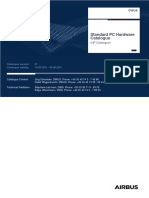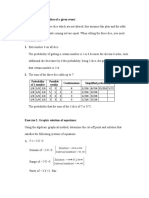0% found this document useful (0 votes)
127 views13 pagesTCP vs UDP: Key Differences Explained
The document describes the layers of the TCP/IP model and some of the main protocols within each layer.
The application layer contains several common protocols like HTTP, SMTP, FTP, and DNS. The transport layer contains TCP and UDP. The networking layer contains IP, ICMP, and IGMP. The data link layer contains Ethernet and ARP, and the physical layer contains the network interface.
Uploaded by
Mohd ShifanCopyright
© © All Rights Reserved
We take content rights seriously. If you suspect this is your content, claim it here.
Available Formats
Download as PDF, TXT or read online on Scribd
0% found this document useful (0 votes)
127 views13 pagesTCP vs UDP: Key Differences Explained
The document describes the layers of the TCP/IP model and some of the main protocols within each layer.
The application layer contains several common protocols like HTTP, SMTP, FTP, and DNS. The transport layer contains TCP and UDP. The networking layer contains IP, ICMP, and IGMP. The data link layer contains Ethernet and ARP, and the physical layer contains the network interface.
Uploaded by
Mohd ShifanCopyright
© © All Rights Reserved
We take content rights seriously. If you suspect this is your content, claim it here.
Available Formats
Download as PDF, TXT or read online on Scribd
/ 13




